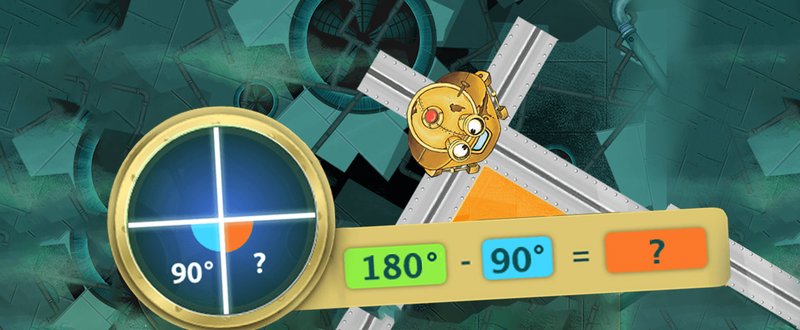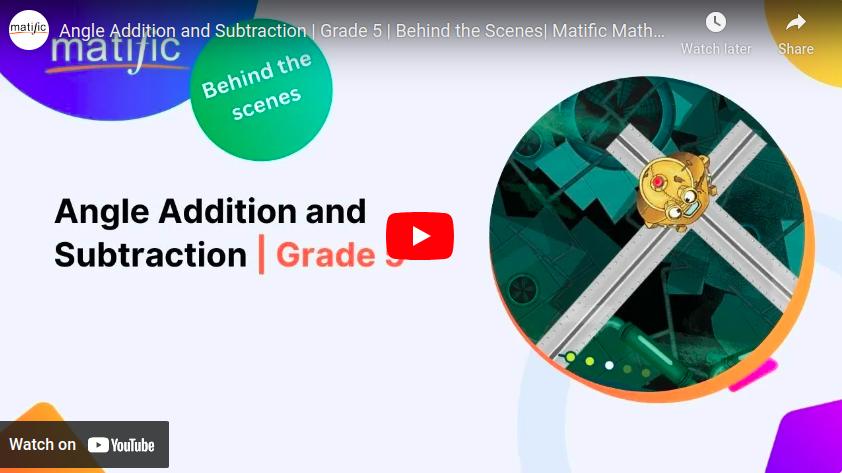
Episode Spotlight - Angle Robotics
Purpose of this episode
Investigate angles on a straight line, angles at a point and vertically opposite angles.
Find the measure of unknown angles.
Description
Help the robot find his love! In this episode, children help a robot navigate along intersecting paths by finding the size of unknown angles.
Watch video walkthrough
Mathematical Background
The concept of angles is a tricky one to learn and to teach. At times we think of angles as a relationship between intersecting line segments, e.g. lines that meet at a 90-degree angle are perpendicular. Other times we think of angles as a measure of rotation, where 90 degrees means making a quarter of a revolution. Adding to the difficulty, angles are actually independent of defining properties of the objects they describe, like the lengths of the line segments that intersect or the radius of revolution. This episode addresses these issues by discussing angles in a scenario that bridges the above mentioned two conceptualizations. Students will also observe arithmetic relationships between special types of angles before formally introducing technical terms such as supplementary, complementary, and vertical angles, terms that invite you to forever forget which one is which.
What makes it great?
The robot is part of a comic love story.
The light-hearted story helps to reduce anxiety around the mathematical topic of calculating angles. Immersing the child in this story and giving them the responsibility of helping the robot encourages accountability. Natural curiosity about the fate of the robot also encourages perseverance.
The questions are designed to build understanding.
The diagram accompanying each question helps bridge the transition from concrete to abstract. An overlay tool exploits technology to allow children to engage with the material by marking up the diagram themselves. The varied questions show different types of angles (vertical, supplementary, etc.) without naming them, seeding ahead for more advanced topics, and since there is no standard algorithm to use, children are required to sharpen their problem solving skills. Note: some of the angle measures have decimal parts! This connection across subjects also helps avoid the misconception that all angles are whole numbers.
Wrong answers provide real opportunities for learning.
The robot’s reaction is personalized to each child’s answer, demonstrating the suggested turn and providing intrinsic feedback for wrong answers–both the child and the robot spot the mistake in time allowing freedom to fail. The animated colorful hints and explanations round out the Wrong Answer Sequences (WASes) making for effective and informative feedback.
Consonance with Our Pedagogical Principles

